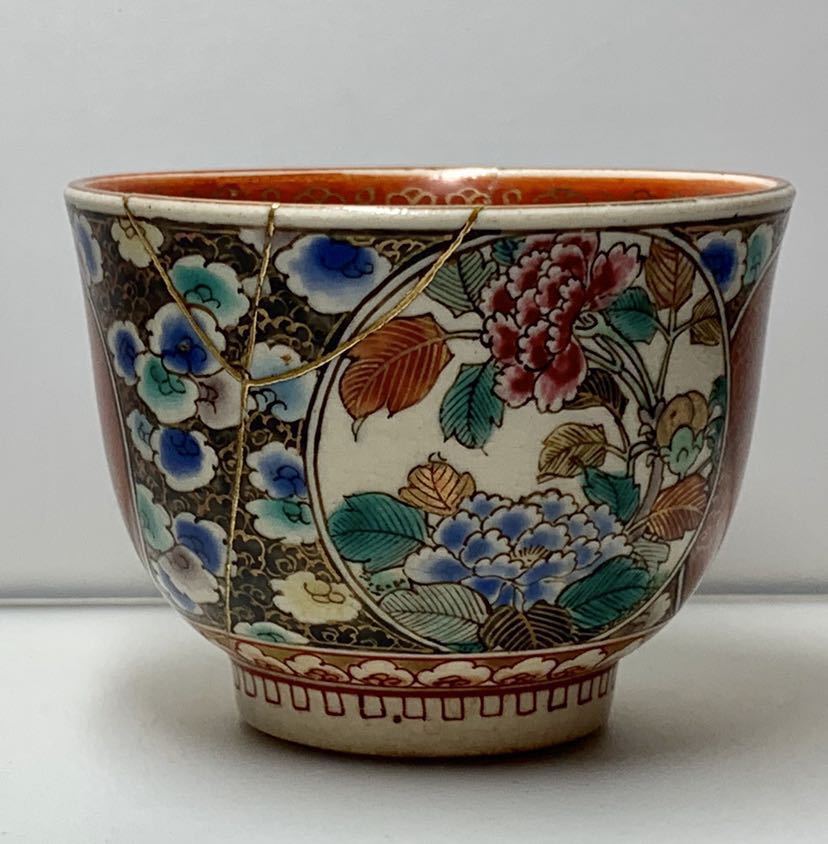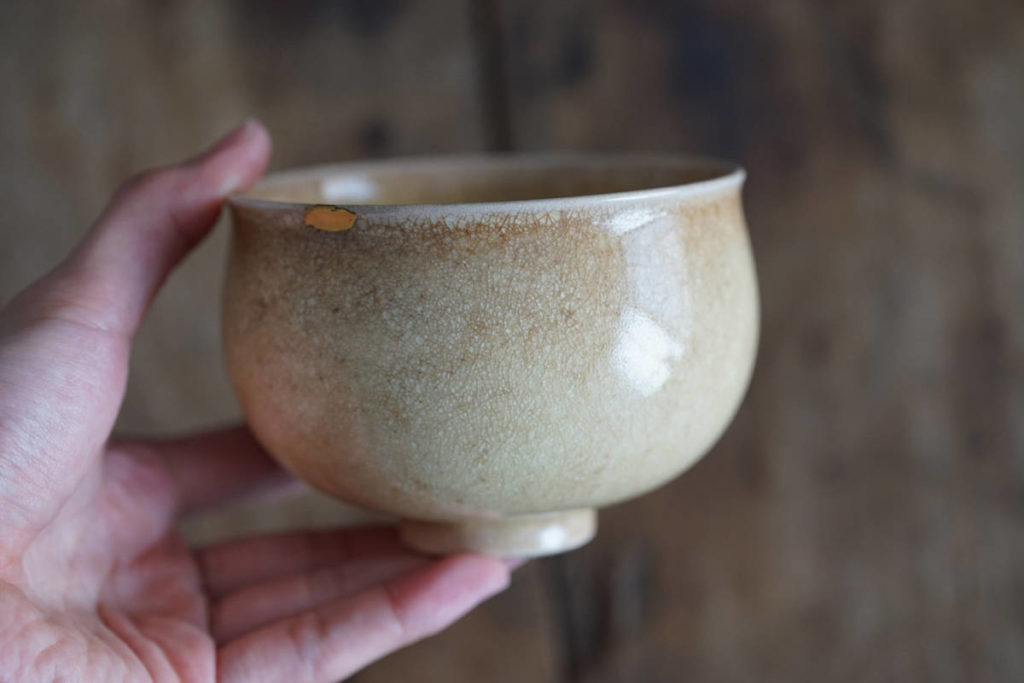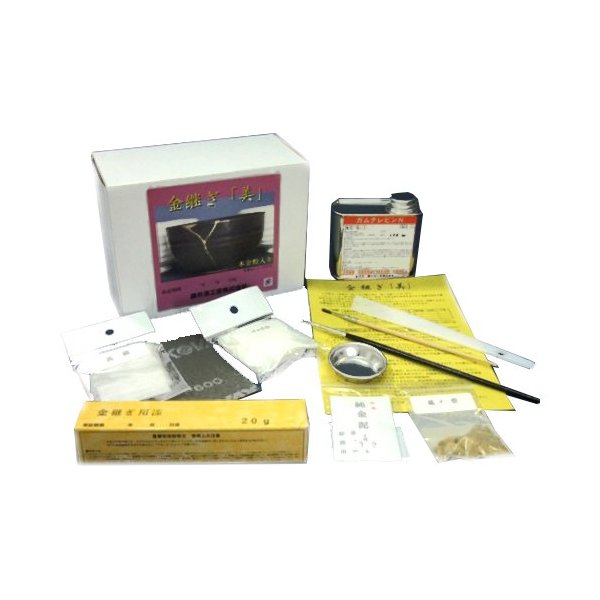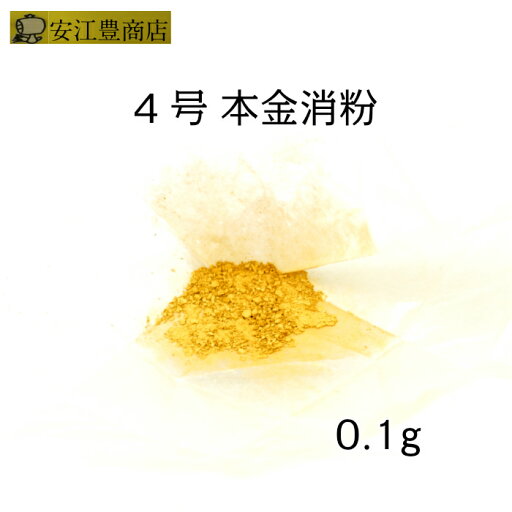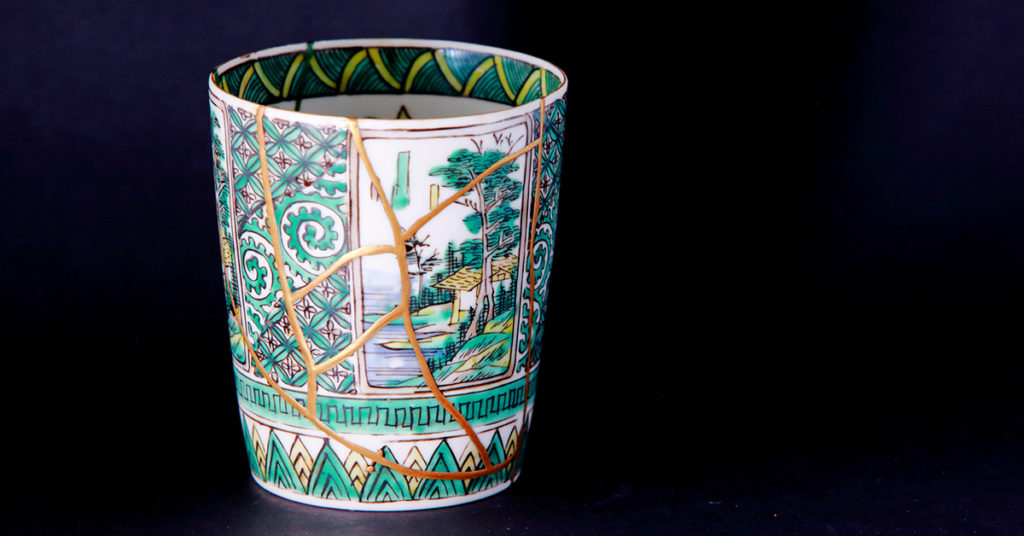
The art of Kintsugi draws a lot of attention in not only in Japan, but around the world as well. Kintsugi is a Japanese traditional technique that mends broken ceramic pieces with lacquer and powdered gold or silver, and is a great way to recycle your precious ceramics. Kintsugi represents the ‘mottainai’ philosophy, which is a combined feeling of regret and consideration – rather than wastefulness – for all material objects. Kintsugi also adheres to a ‘wabi-sabi’ sense of aesthetics by appreciating the imperfect beauty of broken pottery. These uniquely Japanese cultural aspects have given Kintsugi a kind of cult popularity.
Table of Contents
How Do People Use Kintsugi/Kintsukuroi?
Kintsugi (金継ぎ, “golden joinery”) or kintsukuroi (金繕い, “golden repair”) is meant to mend broken pottery and bring it to new life with carefully managed procedures. Some craftsmen work to repair national treasure vessels, while others may simply focus on fixing broken coffee mugs at home.
While kintsugi requires time and effort, the results can bring joy and a new appreciation to those who hold their one-of-a-kind vessels dear. Kintsugi lessons and workshops are becoming very popular in Japan, and as the techniques are exported worldwide, they continue to gain attention as ‘Kintsugi Art’.
The Development of the Kintsugi Craft
Kintsugi is a centuries-old Japanese tradition of repairing broken ceramics with a special tree sap lacquer. It uses gold powder or other metal pigments to enliven the surface. This technique of rejoining pieces with lacquer seems to have been practiced since the ancient Jomon era, as many ritual vessels have been found in archaeological sites.
However, the method of adding a gold decorative finish is believed to have begun during the Muromachi era when the tea ceremony became popular. The tea ceremony, or ‘chanoyu’, first codified by Sen no Rikyu, was then spread throughout Japan by sengoku daimyo (feudal warlords) and wealthy merchants. One of the most powerful daimyo, Oda Nobunaga, rewarded his vassals with tea bowls and utensils in return for their loyalty in battle. The kintsugi technique was most likely developed based on how these vassals maintained and repaired their precious gifts from this famous warlord.
Books About Kintsugi
Relaxing Kintsugi Art at Home
The author, who is a manga artist as well as a lacquer craftsman, introduces kintsugi techniques in an easy manner for beginners, including pictures and some fine illustrations.
The First Kintsugi
This book explains the technical details and processes of kintsugi art, especially the ones that beginners often struggle with or fail to achieve.
An Introduction to Kintsugi from Zero
A great book for beginners, this book details a method in which only real lacquer is used, without any chemical adhesives.
Wabi-sabi and the Philosophy of Kintsugi
Kintsugi continues to have a significant impact on the Japanese mind because it is linked strongly with wabi-sabi philosophy. Wabi means imperfect, and sabi refers to a deterioration or change of quality over time. As pottery is delicate and can be broken at any moment, we feel it has a fleeting, momentary existence. But the art of kintsugi can revive these ceramic works, giving them new beauty and value.
The accidental cracks and chips that occur in broken ceramic pieces cannot be mended to look like the original item. Kintsugi can often bring out a new charm in a piece and render the shimmering veins with a more valuable appearance than the originals. The Japanese aesthetic spirit utilizes kintsugi as a way to renew the beauty of a broken object rather than discarding it as imperfect or damaged.
The Sengoku Daimyo’s Beloved National Treasure Tea Bowl
This is an interesting story involving a tea bowl and kintsugi. The famous sengoku daimyo, Toyotomi Hideyoshi, cherished his Korean tea bowl (ido chawan) as an heirloom, but one day his servant broke it accidentally. Another daimyo, the excellent poet Hosokawa Yusai, happened to be in the room when this happened and read this satirical poem below, which calmed down a furious Hideyoshi.
Tsutsuizutsu,
five broken pieces of
Ido chawan
let the blame fall on me
This broken ido chawan was later repaired with Kijiro lacquer. This is a finish without gold powder which creates an indescribable wabi-sabi aesthetic.
What Can Be Fixed With Kintsugi?
Unfortunately, not all broken pottery can be repaired with kintsugi. Since lacquer will be applied, it is difficult to use with vessels that hold liquid for a long time, or ones that are put directly on a gas flame or steamed like a tea pot. Some other types of ceramics can be repaired using kintsugi techniques, though with varying difficulty.
Ceramic Vessels and Plates
These are the most popular items for kintsugi work, from expensive antique items to daily use plates. Shiny gold lines add a modern impression onto white Japanese porcelain. Kintsugi applied to western antiques can add an oriental flavor.
Glass
https://buyee.jp/mercari/item/m91384110589
https://www.nhk-cul.co.jp/programs/program_866418.html
Cracked antique glass bottles and perfume cases can be reborn with the kintsugi technique. Some people fix even high-quality glassware like Baccarat Crystal.
Jewelry
Vases
The vase featured in this image has a more subdued design, but vases with delicately crafted decorations can also be reliably repaired with kintsugi.
Cups
https://www.mercari.com/jp/items/m55476452179/
Everything from your precious commemorative cups to your favorite everyday coffee cups can be enjoyably transformed with kintsugi.
Let’s Try Out Kintsugi!
Kintsugi is a traditional technique, but even beginners can try it. The benefit of kintsugi is that you can not only repair a piece of pottery, but also give it a new beauty. You can use your artistic sense to the fullest!
The Kintsugi Process
The general procedure is the following, although details may vary according to the type of pottery to be repaired.
Broken Pottery Kintsugi
- Carefully assemble the broken pieces
- Fill any cracks or gaps with putty
- Apply lacquer
- Sprinkle the gold powder onto the lacquer
Basic Materials for Kintsugi
・Polishing powder
・Wooden powder
・Metal powder (e.g. gold powder)
・Urushi lacquer (or synthetic lacquer)
・Several small spatulas (for spreading, kneading, and filling)
・Soft small brush
・Exacto knife
・alcohol, water resistant paper, measuring spoons, gloves etc.
Get Started with a Kintsugi Kit!
It is recommended that beginners prepare a set with the minimum amount of necessary tools rather than collecting the individual tools at the outset. Once you get used to it, you can purchase more tools and more gold powder. The Buyee proxy service will bid and pay for the beginner’s kintsugi kit and its items on your behalf and ship to your address overseas.
Give kintsugi a try, and learn about a profoundly Japanese tradition!
Recommendations for Beginners
Kintsugi Beginner’s Set
This beginner’s set uses real and innovative techniques and is produced by a lacquer shop established 150 years ago. Anyone can start right away by referring to the detailed picture instructions.
Tableware Kintsugi/Gintsugi Set for Beginners
This set is suitable for tableware using genuine gold powder, genuine silver powder, urushi lacquer and other natural materials. This set contains an easy instruction format, full of color pictures and YouTube videos in Japanese and English for worldwide beginner craftspeople. Mr. Shibata Katsuya with over 30 years of professional experience supervised this product.
Authentic Kintsugi Set
This high quality kintsugi set from Tokyu Hands comes with powders and other materials to help you kick-start your own work.







